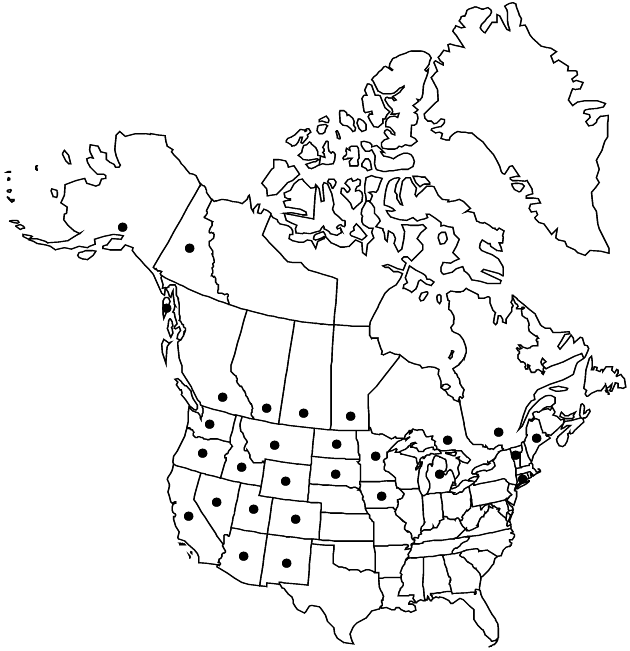Madia glomerata
Fl. Bor.-Amer. 2: 24. 1834.
Plants 5–120 cm, self-compatible (heads not showy). Stems proximally villous to hispid, glandular-pubescent distally, glands yellowish or black, lateral branches sometimes surpassing main-stems. Leaf-blades linear to lance-linear, 2–10 cm × 2–7 mm. Heads usually in crowded glomerules, sometimes in corymbiform or paniculiform arrays. Involucres narrowly ovoid or ellipsoid, 5.5–9 mm. Phyllaries ± pilose and glandular-pubescent, glands yellowish or black, apices erect or reflexed, ± flat. Paleae mostly persistent, distinct. Ray-florets 0 or 1–3; corollas greenish yellow to purplish, laminae 1–3 mm. Disc-florets 1–5 (–12), bisexual, fertile; corollas 3–4.5 mm, pubescent; anthers ± dark purple. Ray cypselae black, dull, compressed, beakless. Disc cypselae similar. 2n = 28.
Phenology: Flowering Jun–Sep.
Habitat: Openings in grasslands, meadows, swales, shrublands, woodlands, forests, edges of marshes, lakes, or watercourses, disturbed sites, often in coarse, sandy or gravelly soils
Elevation: 0–3100 m
Distribution

Alta., B.C., Man., Ont., Que., Sask., Yukon, Alaska, Ariz., Calif., Colo., Conn., Idaho, Iowa, Maine, Mich., Minn., Mont., Nev., N.Dak., N.Mex., Oreg., S.Dak., Utah, Vt., Wash., Wyo.
Discussion
Madia glomerata has the most extensive North American distribution of any species in Madiinae. At southern latitudes, M. glomerata occurs mostly in montane settings. Occurrences in eastern North America are mostly local and widely scattered.
Selected References
None.